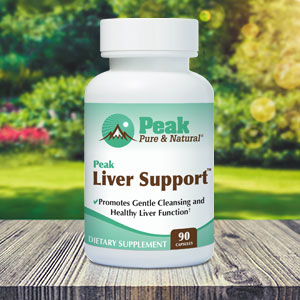Get Easy Health Digest™ in your inbox and don’t miss a thing when you subscribe today. Plus, get the free bonus report, Mother Nature’s Tips, Tricks and Remedies for Cholesterol, Blood Pressure & Blood Sugar as my way of saying welcome to the community!
Identical twins reveal exercise changes gene expression

When it comes to our well-being, exercise is far better than any pill.
Regular exercise has been shown to impact the body on a cellular level. These changes can slow cellular aging and help support good cardiovascular health as well as stave off a host of other conditions, among them fatty liver, Alzheimer’s disease, obesity, depression and sleep apnea.
In fact, there’s evidence that exercise may even influence the way our genes behave…
Scientists have previously observed that despite having the same genes, the majority of identical twins develop different diseases as they age. Epigenetics may be part of the reason why.
The differences in twins’ epigenomics
Researchers at Washington State University (WSU) examined pairs of identical twins to see what effects consistent exercise had on their epigenomes. These molecular processes are independent of DNA sequence but influence gene expression.
“If genetics and DNA sequence were the only driver for biology, then essentially twins should have the same diseases,” says Michael Skinner, WSU biologist and the study’s corresponding author. “But they don’t. So that means there has to be an environmental impact on the twins that is driving the development of disease.”
According to the study results, the more physically active sibling in each identical twin pair had epigenetic markers linked to reduced metabolic syndrome, a condition that can lead to heart disease, stroke and type 2 diabetes.
This suggests that how a person interacts with their environment strongly influences markers of metabolic disease — as opposed to just their inherited genetics calling the shots. What this means is consistent exercise may not only shrink the waistline — but could change the very molecules that influence how genes behave in the body.
“The findings provide a molecular mechanism for the link between physical activity and metabolic disease,” Skinner says. “Physical exercise is known to reduce the susceptibility to obesity, but now it looks like exercise through epigenetics is affecting a lot of cell types, many of them involved in metabolic disease.”
When collecting data on the twins from 2012 to 2019, the researchers found many of the twin pairs differed from each other on measures of physical activity, neighborhood walkability and BMI. Their cheek swabs also revealed epigenetic differences, with the more physically active twin (exercising more than 150 minutes a week) having alterations in areas called DNA methylation regions. These areas correlated with lower BMI and reduced waist size.
Our genes don’t have to define us
The upshot of these results is that our genes don’t have to define our health. Even if we’re genetically predisposed to certain conditions, like heart disease or type 2 diabetes, we can take actions that will help offset those genetic risks.
All the more reason to exercise regularly.
It’s true that certain types of exercise, like weight training and high-intensity interval training (HIIT), have greater health benefits than a simple daily walk. But if you’re starting from zero, any regular activity will help put you on the path to better health.
One great way to get started is with “activity snacks.” These can easily be tailored to your daily schedule and can be done without special equipment or access to a gym. And it’s easy to ramp up the intensity of the exercises as you progress.
Whatever type of exercise you choose to do, the key is to make it consistent. Ten minutes of exercise done every day will get you better results than an hour spent at the gym every couple of weeks or so.
Editor’s note: There are perfectly safe and natural ways to decrease your risk of blood clots including the 25-cent vitamin, the nutrient that acts as a natural blood thinner and the powerful herb that helps clear plaque. To discover these and other secrets of long-lived hearts, click here for Hushed Up Natural Heart Cures and Common Misconceptions of Popular Heart Treatments!
Sources:
Twin study links exercise to beneficial epigenetic changes — Washington State University
Epigenome-wide association study of physical activity and physiological parameters in discordant monozygotic twins — Scientific Reports
The Effects of Physical Activity on a Cellular Level — ActiGraph
How Diet Can Change Your DNA — Scientific American














